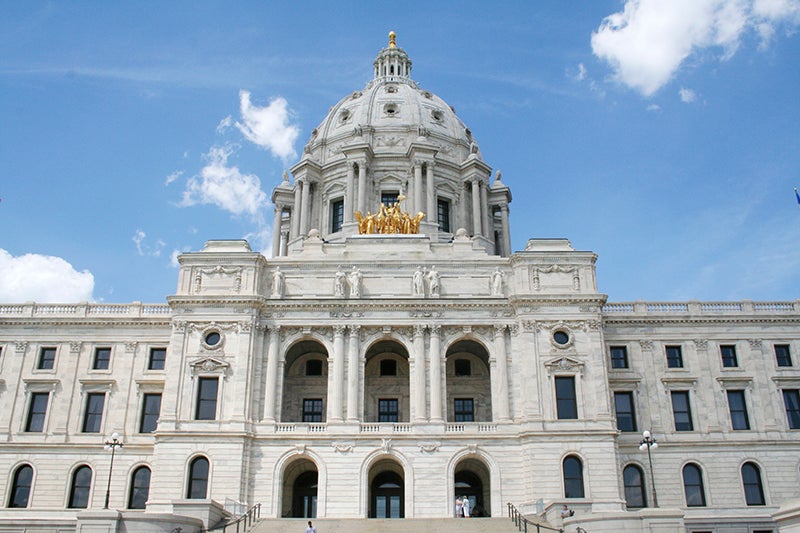Minnesota Legislature convenes with 2020 election looming
Published 7:47 pm Tuesday, February 11, 2020
ST. PAUL — The Minnesota Legislature opened its 2020 election-year session on Tuesday with lawmakers debating how much to borrow for public infrastructure projects and a host of other contentious issues that divide Democrats and Republicans.
Dozens of women wearing red “Moms Demand Action” T-shirts in support of gun control gathered outside the House and Senate chambers and roamed the halls of the Capitol to welcome lawmakers back.
The House held not one but two hearings on a Democratic-backed bill to provide emergency insulin supplies to diabetics who can’t afford them, one of the main issues left over from last year. Senate Republicans plan to hold a hearing Thursday on their own insulin bill that focuses on long-term affordability. Major elements of the Senate proposal have been incorporated into the House bill, but the two parties disagree over how much the insulin manufacturers should pay.
Democratic House Majority Leader Ryan Winkler, of Golden Valley, said they hope to bring the bill to the floor “within the first couple of weeks.”
House Democrats also plan to pass two gun violence prevention measures, a bill for universal background checks on firearms transfers and a “red flag” bill to allow courts to confiscate guns from people judged to be an imminent danger to themselves or others. Similar legislation passed the House last year but not the Republican-controlled Senate, where leaders don’t plan to take those bills up this year either. Democrats hope to use the issue to help to regain control of the Senate in the 2020 elections.
“This session, we will spend some time articulating our vision for Minnesota,” Democratic House Speaker Melissa Hortman, of Brooklyn Park, told reporters. “And some of that won’t become law. We know that. But rather than dismiss it as just politics, I think it’s important to elevate what we do in a democracy. Its about telling Minnesotans what we would do if we had a Democratic Senate.”
The chambers convened around noon and both held solemn tributes to three Minnesota National Guard members who were killed in a Black Hawk helicopter crash near St. Cloud in December: Chief Warrant Officers James Rogers Jr., of Winsted, and Charles Nord, of Perham; and Sgt. Kort Plantenberg, of Avon. The House also held a remembrance for Democratic Rep. Diane Loeffler, of Minneapolis, who died of cancer last November.
Lawmakers also got an early start on assembling a borrowing bill to fund infrastructure projects around the state such as housing, water treatment plants, roads and bridges, school and other government buildings, and public safety facilities.
The committee that will craft the House version of what’s commonly known as a bonding bill got an early start by meeting at 8 a.m. to hear a walk-through of Democratic Gov. Tim Walz’s $2 billion wish list from Budget Commissioner Myron Frans and his staff.
The committee chair, Democratic Rep. Mary Murphy, of Hermantown, later said she plans a list closer to $3.5 billion. Senate Republican leaders have said they would like to hold the price tag below $1 billion. Since bonding bills require 60% majorities in each chamber to pass, the final package will need at least six House Republican and at least six Senate Democratic votes.
Murphy said she wants a selection of projects that focus on asset preservation while allowing for some “dreams.” That will take “more than the governor and the Republicans are proposing,” she said.
House GOP Minority Leader Kurt Daudt, of Crown, told reporters he could support a “reasonably sized” bill, depending on the projects it includes. While he didn’t specify a figure, he said it would be smaller than what Walz and House Democrats have proposed..
“If a bonding bill is too big it’s difficult to pass,” he said. “If it’s too small it’s difficult to pass, but we’re going to make sure we have the right-sized bill with the right projects in it.”




